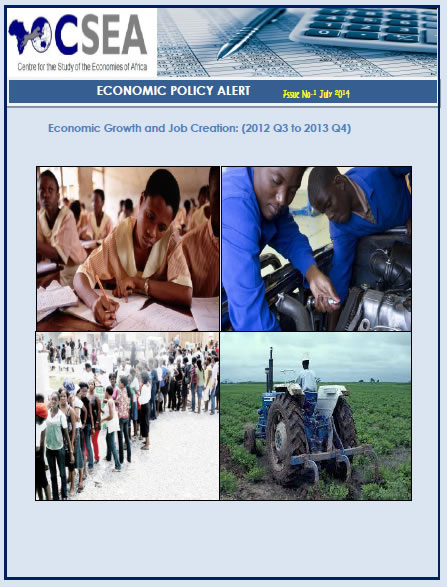Date of Publication: July 2014
Volume Number: 1 Issue 1
Document Size: 14 pages
Job creation remains a centerpiece of President Goodluck Jonathan administrationsefforts owing largely to the prevailing high rate of unemployment, particularly among the youth. Measured as ratio of the unemployed labor force that is actively looking for employment to total labour force, the unemployment rate rose from 21.4 percent in 2010 (the year receding the inauguration of the administration) to 27.4 percent in2012. During the same period, youth unemployment rose from about 35.9 percent to42.0 percent.
The National Bureau of Statistics estimates that the labor force grew at an averageannual rate of 3.2 percent from 57.5 million in 2006 to 65.2 million in 2010 and 67.3million in 2011. As at 2011, the active unemployed labor force stood at 16.1 million,yielding 23.9 percent unemployment rate. At the annual rate of growth, the laborforce is estimated at 69.4 million in 2012. Given the officially reported unemploymentrate of 27.4 percent in 2012, the unemployed labor force rose to 19 million in 2012,implying that a net of 2.9 million people became newly unemployed during the year.
This figure represents an increase from 2.1 million in 2011 and 1.5 million in 2010.The alarming rate of increase in unemployment is driven by both labor force growthand lackluster demand for labor in the labor market.

